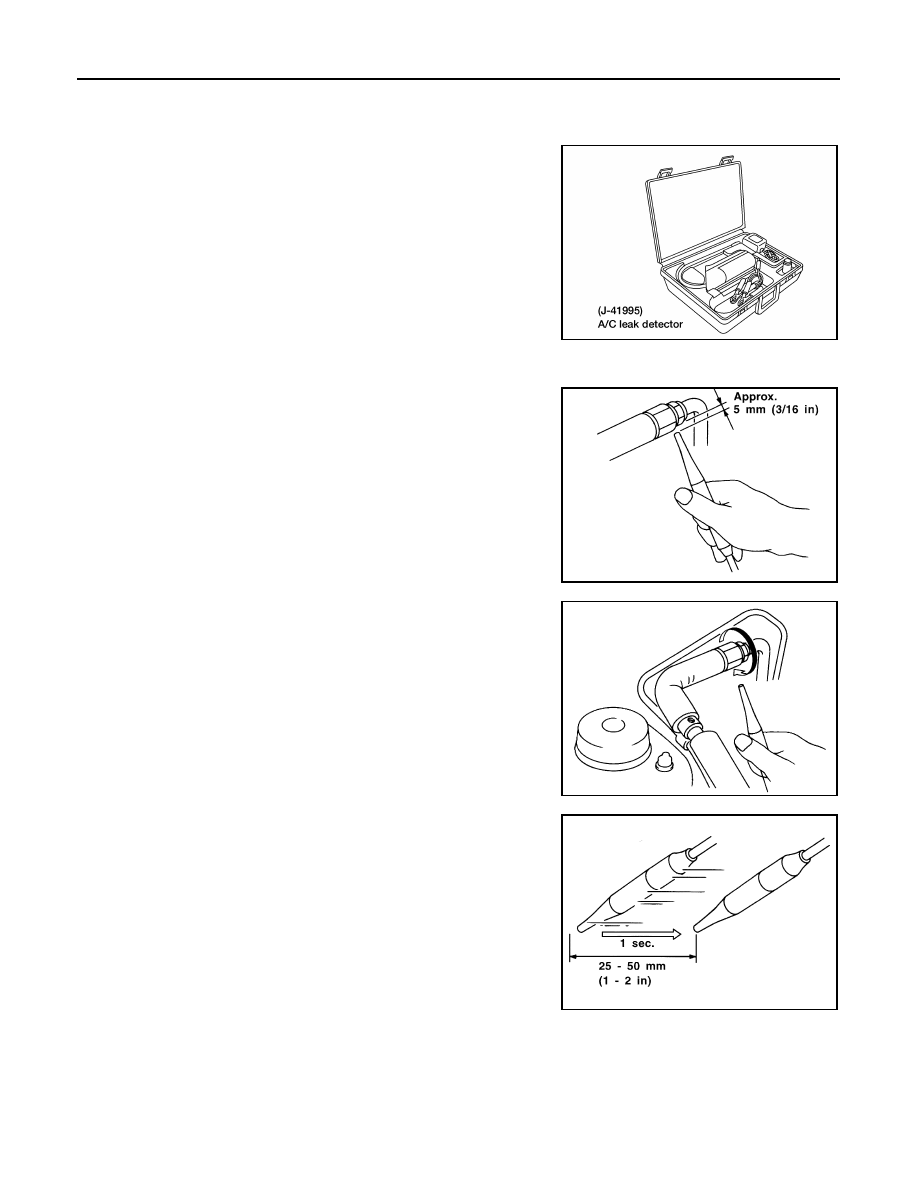Nissan Frontier D22. Manual - part 838

MTC-74
REFRIGERANT LINES
Electronic Refrigerant Leak Detector
EJS0020S
PRECAUTIONS FOR HANDLING LEAK DETECTOR
NOTE:
●
When performing a refrigerant leak check, use a J-41995 A/C
leak detector or equivalent. Ensure that the instrument is cali-
brated and set properly per the operating instructions.
●
The leak detector is a delicate device. In order to use the leak
detector properly, read the operating instructions and perform
any specified maintenance.
●
Other gases in the work area or substances on the A/C compo-
nents, for example, anti-freeze, windshield washer fluid, sol-
vents and lubricants, may falsely trigger the leak detector. Make
sure the surfaces to be checked are clean. Clean with a dry
cloth or blow off with shop air.
●
Do not allow the sensor tip of the detector to contact any sub-
stance. This can also cause false readings and may damage the detector.
1.
Position probe approximately 5 mm (3/16 in) away from point to
be checked.
2.
When testing, circle each fitting completely with probe.
3.
Move probe along component approximately 25 - 50 mm (1 - 2
in)/sec.
CHECKING PROCEDURE
NOTE:
To prevent inaccurate or false readings, make sure there is no refrigerant vapor, shop chemicals or smoke in
the vicinity of the vehicle. Perform the leak test in a calm area (low air/wind movement) so that the leaking
refrigerant is not dispersed.
1.
Turn engine off.
AHA535A
SHA707EA
SHA706E
SHA708EA